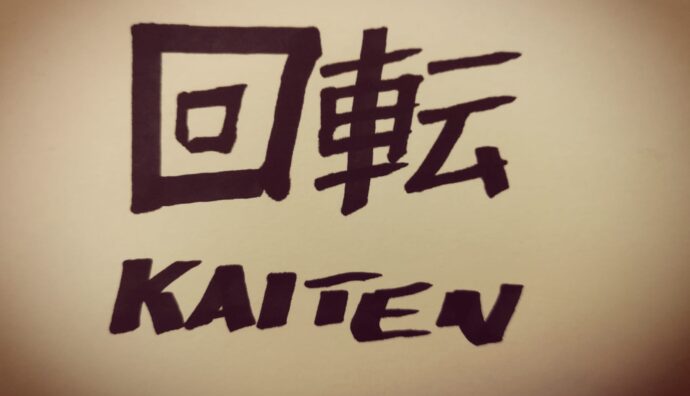Can a simple term, which describes a movement of the body be read at different levels?
When you say kaiten, any practitioner who has been on a tatami for more than a month, immediately recalls the tai sabaki, the rotation of the body around its axis , changing the direction.
Is it all there?
From a physical and biomechanical perspective, certainly it’s not. A simple rotation reveals how much we are able using our body in a harmonious and integrated way or not, respecting or not its structure and its needs on the one hand and finalizing them to the practice on the other. Slowly and steadily, functional movements begin to be perceived thanks to the signals sent by the feet, heels, ankles, leg muscles, knees and hips. The feeling, after some time, is that of strong astonishment: probably you discover that you have used your body in the least functional way, sometimes harmful, disrespectful to youtligaments, joints, muscles, cartilages.
The hips slowly awaken and one begins to perceive his/her own asymmetry, the possible existence of blocks and rigidity whose origin may not be so immediate to be identified in our psychophysical system. At the same time, one begins to taste, at first almost by chance, later more and more constantly, the source of the “force without force” that is inherent in the use of our body… Simply using it as it was created.
Kaiten thus becomes the spring that amplifies the imbalance of the practice partner and that loads its power relasing its explosiveness during a throwing technique.
Again, is it all there?
Let’s put it this way: if every practitioner came to full awareness and full mastery of the movement,from a mere technical level, everyone should be satisfied. However, it is clear that the reality of the practice does not give back this picture, and this for many reasons, including the psychophysical limits that each of us carries with ourselves.
The evolutionary tension of the practice from ko-tai – the solid, square, hyper-rational dimension – to ki-tai – the subtle dimension, the more spiritual one – passing through the intermediate level, the ju-tai – the more fluid dimension – it lives from the simultaneous interpenetration of these three levels, both for the beginner and for the ascetic sensei. The level of perception of things changes and the ability to transform this perception into action. However, if everything crystallizes in an automatism of the body, there is soon the risk of regressing to an exclusively physical dimension.
With the risk that whoever fills his mouth with ki-tai, confines himself to the most physical level of the practice, without even realizing that.
So it is good, from time to time, to brush up on the semantics of what, by habit, risks to be even misunderstood, if not forgotten in a drawer of our soul.
回 転, kaiten, rotation or revolution around the axis (kaitenjiku). All right…BUT what kind of rotation? The kanji that make up the word don’t help much. On the one hand a mouth inside a box to indicate “roundness”, on the other a cart with a two beside it and the symbol of the self. Sometimes it is good not to get too involved in etymology and linguistics.
Sure, a cart that goes round and round, pulled in both directions of rotation by a person who loudly announces the goods he is carrying, gives a certaing suggestion.
Kaiten sushi, the mythical conveyor belt on which sushi dishes leave the kitchen and travel towards the customers seated at the counter, is further evocative.
But… (There is almost always a “but”).
Whether it is a cart that turns in circles or a conveyor belt that enters and leaves the kitchen, our Western mind can only grasp the circularity of the movement. And kaiten, as a tai sabaki, is not strictly circular. So?
Let’s try to broaden our horizons. Let’s think of the “revolution motion” of a celestial body. Let’s imagine that trajectory that we are all taking right now on our planet Earth around the Sun.
In this perspective, rotation occurs because there is a “center of mass” that determines its trajectory. In the conflictual relationship (on the mat as well as outside), while not losing their individuality, the parties create a unique and new entity, which determines dynamics distinct from individual movements.
A kaiten done alone is nothing more than a 180 degree movement. A kind of human wiper dressed as a martial arts practitioner. But the kaiten triggered by a grab or an attack, is a movement that wraps the attacker and then returns the energy with a second winding in which the energy is amplified and somehow, literally, “circuates”.
The revolutionary scope of the kaiten therefore is to consider the complete integration of the attack into one’s sphere of reception and action. In other words, accept the duality, keeping the ability to overcome it.
So, thanks to the respect that arises from the habit of looking at the world as others do, putting ourselves in the same perspective as they do at least for that instant of the kaiten, then we can say that we are the bearers of a true, genuine and lasting revolution.

